Today, I am reviewing another great tenor saxophone mouthpiece made by a young mouthpiece maker, refacer and great saxophone player from Russia named Kirill Poudavoff. Kirill is a great young tenor sax player that is in his fourth semester at Berklee College of Music in Boston.
Kirill sent me four examples of his tenor saxophone mouthpieces made of plastic after I asked if I could perhaps try out his mouthpiece work. I have already reviewed the KPoudavoff Double Ring 7* model. Today, I will be reviewing the KPoudavoff Florida 7* tenor saxophone mouthpiece which is a copy of an Otto Link Florida Super Tone Master tenor saxophone mouthpiece from the late 60’s.
KPoudavoff Florida Otto Link Copy Tenor Saxophone Mouthpiece
If you haven’t heard of Kirill Poudavoff yet, check him out in the video at the bottom of this review. Kirill sounds more like Dexter Gordon than any other tenor sax player I have heard, which is very cool!
I would also like to add how refreshing it is to hear a young person like Kirill Poudavoff, playing long notes and melodies while improvising. I was listening to Kirill the other day, and like Dexter, he just played one note and held it for like 4-6 beats before continuing on with his idea. I think it was a video from Wally’s in Boston. I saw some Berklee students in the audience who looked totally confused and shocked as they thought, “Wait, you can play long notes when improvising?”. I love long notes and you don’t hear a lot of young guys doing that. For that matter, you don’t hear very many old guys doing it. (If you don’t know what I am talking about, go listen to some Dexter Gordon………)
KPoudavoff Florida Otto Link Copy Tenor Saxophone Mouthpiece in Brass
When I asked Kirill if I could try out some of his saxophone mouthpiece work, I had no idea that he would send me four tenor saxophone mouthpieces to check out. Here is what he sent me:
- KPoudavoff Double Ring 7*- copy of an Otto Link 7* Florida Double Ring Super Tone Master
- KPoudavoff Florida 7*- copy of an Otto Link 7* Florida Super Tone Master
- KPoudavoff Zimberoff Hollywood 7*- copy of a Dukoff Hollywood Zimberoff model
- KPoudavoff Zimberoff Hollywood 6* (Dexter’s Curve)- copy of a Dukoff Hollywood Zimberoff (with Dexter Gordon’s 6* facing curve on it)
I will be reviewing all of these tenor saxophone mouthpieces separately, one after the other, so you can get a complete sense of Kirill Poudavoff’s work.
First, I have to start with the disclaimer that Kirill Poudavoff told me that he doesn’t make these plastic tenor saxophone mouthpiece models any longer. Right now, at the time of this review, he is only making the tenor mouthpiece models listed above in solid silver for 750 dollars each. I have posted a few photos of the tenor mouthpieces in metal throughout this review so that you can see how the mouthpieces look in solid silver as well.
That being said, Kirill did say that these four plastic tenor saxophone mouthpieces were a good representation of his work and played similarly to the solid silver versions of these mouthpieces.
KPoudavoff Florida Otto Link Copy Tenor Saxophone Mouthpiece in Solid Silver
The four KPoudavoff tenor saxophone mouthpieces I received look to have the same outward size (diameter and length), shape and contours of the Otto Link and Dukoff Hollywood tenor saxophone mouthpieces they are copies of.
The KPoudavoff Double Ring and Florida models have the Otto Link ridge on top and the lines on the shank that match those Otto Link models. The ridge on the top of the mouthpiece has “KPoudavoff” engraved into it instead of “Otto Link”. The tip opening of 7* is engraved on the corner of the body to the right of the table just like it is on an original Otto Link Florida tenor saxophone mouthpiece.
KPoudavoff Florida Otto Link Copy Tenor Saxophone Mouthpiece
On initial examination, you can see the sanding marks on the plastic material of the mouthpiece where Kirill sanded the table and worked on the baffle area of the mouthpiece. Although the sanding marks look rough, the baffle area and table feel very smooth to the touch.
I know these sanding marks will bother some of you, but I am not bothered in the least. In my mind, they don’t matter to me. What matters the most to me, is how the mouthpiece plays. I have played some horrendous looking mouthpieces over the years that played phenomenally, so I don’t necessarily care how perfect a mouthpiece looks on the inside or outside. I have also tried mouthpieces that looked absolutely stunning and perfect to the eye, that didn’t play well at all for me. The lesson learned: Don’t judge a mouthpiece until you play it.
KPoudavoff Florida Otto Link Copy Tenor Saxophone Mouthpiece
The point I am trying to make, is that Kirill worked on and sent me four examples of his work for free because I asked to try out his work. I believe Kirill’s main focus is making a mouthpiece true to the original version while also making a mouthpiece that plays great. The cosmetic stuff is not as important. Don’t let these plastic samples sway you from what’s most important, how do these KPoudavoff tenor saxophone mouthpieces play?
KPoudavoff Florida Otto Link Copy Tenor Saxophone Mouthpiece
Looking past all the sanding marks, the KPoudavoff Florida tenor saxophone mouthpiece looks to have relatively even side rails similar to an Otto Link mouthpiece. The tip rail looks well made and the curve matches fairly closely to my Rigotti Gold tenor saxophone reeds. All the reeds I tried on the mouthpiece sealed well when using the suction test.
The KP Florida tenor saxophone mouthpiece played great with Rigotti Gold saxophone reeds between the 2 1/2 medium strength to the 3 strong strength for me. The Florida tenor sax mouthpiece is not an altered “Florida” or a “Florida” on steroids, Kirill Poudavoff has expressed his goal of making these mouthpiece as close to the originals as he can possibly get them. This is an admirable goal and refreshing to hear from a young up and coming mouthpiece craftsman.
KPoudavoff Florida Otto Link Copy Tenor Saxophone Mouthpiece
I do have a great Florida Otto Link mouthpiece here in my collection and the KPoudavoff model looks very similar in regards to the baffle profile and chamber shape.
In comparison to the KPoudavoff Double Ring mouthpiece that I have already reviewed, as I look at both tenor sax mouthpieces side by side, the KPoudavoff Florida tenor mouthpiece looks to have a longer rollover baffle than the Double Ring tenor sax mouthpiece. It’s hard to tell because of the texture of the plastic material, but I think the Double Ring mouthpiece has a slightly deeper chamber floor than the Florida mouthpiece chamber floor. I’m not 100% certain of this, but that is what it looks like when comparing both tenor saxophone mouthpieces side by side.
The KPoudavoff Florida tenor saxophone mouthpiece played great for me and not surprisingly, like a terrific metal Florida Otto Link tenor sax mouthpiece. The Florida mouthpiece had a round and focused sound that I would associate with a great playing Florida Otto Link Super Tone Master type of sound. It wasn’t at all tubby or too spread sounding like some modern metal Otto Link Super Tone Master tenor saxophone mouthpieces can be.
For me, a great Otto Link tenor sax mouthpiece has a balance between a fat, round sound full of character and warmth with a nice core to the sound. Usually, the tone of these Otto Link “Super” Tone Master tenor sax mouthpieces sits in a neutral position between dark and bright with some mouthpieces leaning to the darker and warmer side and some leaning to the brighter side. I found this KPoudavoff Florida 7* mouthpiece to lean to the brighter side of a tenor saxophone tone, especially in the upper register of the saxophone. (I found the KPoudavoff Double Ring mouthpiece to lean to the darker and warmer side)
KPoudavoff Florida Otto Link Copy Tenor Saxophone Mouthpiece
The intonation on the KPoudavoff Florida tenor saxophone mouthpiece was excellent on my Selmer Super Balanced Action (SBA) tenor saxophone. The low notes were thick and full sounding and sub-toned beautifully.
The KPoudavoff Florida tenor sax mouthpiece was very even and smooth throughout the range of the saxophone and the fast lines sounded great. In comparison to the KPoudavoff Double Ring tenor mouthpiece, which seemed like it had more of a warm smoothness within those fast lines, the Florida mouthpiece seemed to have more of an aggressive and crisp smoothness within those fast lines. Almost like the Double Ring mouthpiece sounded like it was being played on the other end of the room and the Florida mouthpiece was being played right in front of me with the bell of the saxophone pointed right at my face.
The KPoudavoff Florida tenor mouthpiece was definitely brighter and more focused in tone for me than the Double Ring mouthpiece which sounded warmer and more spread in tone in comparison to the Florida mouthpiece. This was most apparent with the harder Rigotti Gold 3 medium reed as I put more air through the saxophone. The Florida mouthpiece just had more of that “in your face” brightness and volume to the tone when compared to the Double Ring tenor sax mouthpiece.
KPoudavoff Florida Otto Link Copy Tenor Saxophone Mouthpiece
I’ve included two sound clips of the KPoudavoff Florida tenor saxophone mouthpiece like I did for the Double Ring mouthpiece review.
The first one is with a Rigotti Gold 3 medium tenor saxophone reed. I loved this reed because of the thick, solid core and character you can hear in the tone. The upper register had a nice brightness and crispness to the tone. You can also hear more edge in the tone when I push the volume of the mouthpiece.
The second sound clip is with a softer Rigotti Gold 2 1/2 medium tenor saxophone reed. This reed seemed to give me a fatter more lush sound in the lower end of the saxophone. Although I loved the low notes on this softer reed, I think the softer reed made the high notes a bit thinner and edgier than I usually like. I preferred the thicker sound of the upper register with the Rigotti Gold 3 medium tenor saxophone reeds.
There is enough difference between these two sound clips in tone and response that I thought it was important to include both clips, especially since some listeners like the sound of softer reeds and some like the sound of harder reeds.
KPoudavoff Florida Otto Link Copy Tenor Saxophone Mouthpiece
In my opinion, the KPoudavoff Florida tenor saxophone mouthpiece is a great tenor saxophone mouthpiece for those looking for a mouthpiece that is similar if not exact to a vintage Otto Link Florida “Super” Tone Master tenor saxophone mouthpiece. It has a full sound that leans to a brighter and more focused tenor saxophone sound.
Although the KPoudavoff Florida tenor sax mouthpiece is definitely brighter than the Double Ring tenor mouthpiece, the tone of the Florida mouthpiece can still be manipulated and shaped to the sound the player hears in their head. If your tenor saxophone sound concept is brighter, like John Coltrane, you can definitely go that way with the KPoudavoff Florida tenor sax mouthpiece. If you like a fatter and darker tenor saxophone sound, you can go in that direction as well with this tenor mouthpiece. The great advantage to an Otto Link style tenor saxophone mouthpieces is that they allow you the freedom to shape and mold your own sound just the way you want it. That is why so many tenor sax players have played on Otto Link tenor mouthpieces over the years.
I wrote in the KPoudavoff Double Ring tenor saxophone mouthpiece review that I probably wouldn’t use the Double Ring mouthpiece on a loud Top 40 kind of gig because I didn’t think it delivers enough volume and brightness for that type of gig. The KPoudavoff Florida tenor mouthpiece and it’s added rollover baffle is definitely getting closer to that brightness and volume line that could be used in that loud type of playing situation. I am never quite sure of that until I get a mouthpiece out on a gig but here in my home, the KPoudavoff Florida tenor sax mouthpiece really has some nice power and brightness when pushed.
Of course, the KPoudavoff Florida tenor saxophone mouthpiece would be right at home on a straight ahead jazz gig. I would love any of these four KPoudavoff tenor saxophone mouthpieces on a jazz gig of any sort.
KPoudavoff Florida Otto Link Copy Tenor Saxophone Mouthpiece
If you like the sound and look of the KPoudavoff Florida tenor saxophone mouthpiece by Kirill Poudavoff, you can order one from Kirill himself by contacting him via his email at kpoudavoff@gmail.com. Thanks again to Kirill Poudavoff for sending me these great tenor saxophone mouthpieces to play and review here on my site.
If you are lucky enough to play a KPoudavoff Florida tenor saxophone mouthpiece or have any other thoughts or comments about this review, I would love to hear what you think in the comments below. Thanks, Steve
KPoudavoff Florida Otto Link Copy Tenor Saxophone Mouthpiece Review – Rigotti Gold 3 Medium Reed
KPoudavoff Florida Otto Link Copy Tenor Saxophone Mouthpiece Review – Rigotti Gold 2 1/2 Medium Reed
Kirill Poudavoff playing “More Than You Know” on his Florida Otto Link Metal Copy Tenor Saxophone Mouthpiece (he is also accompanying himself on piano)


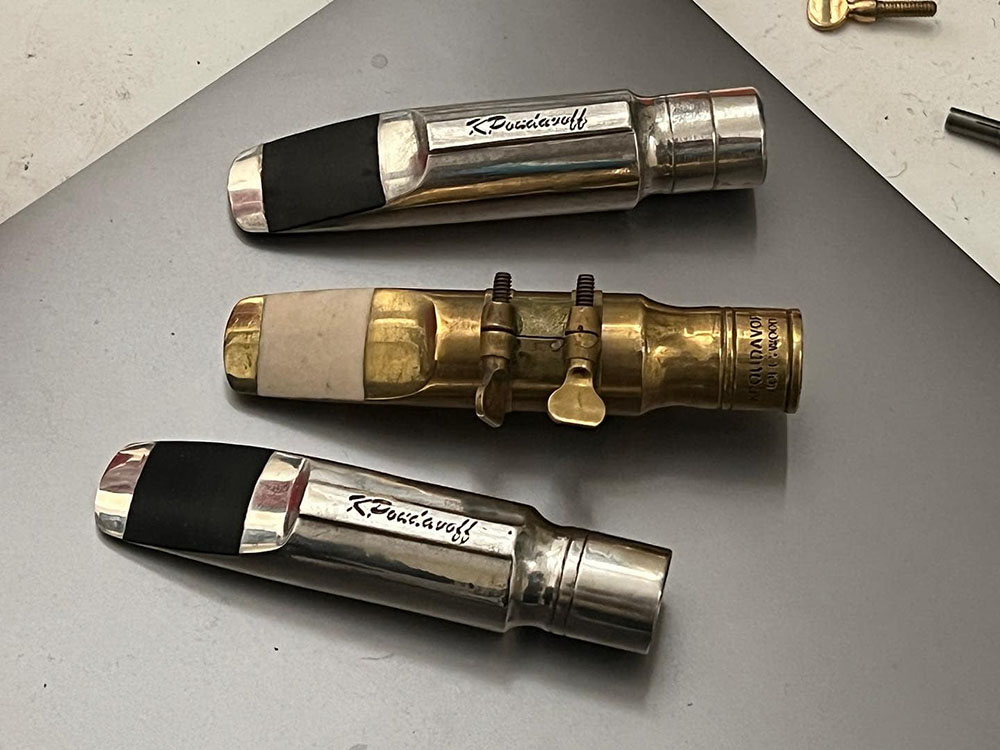


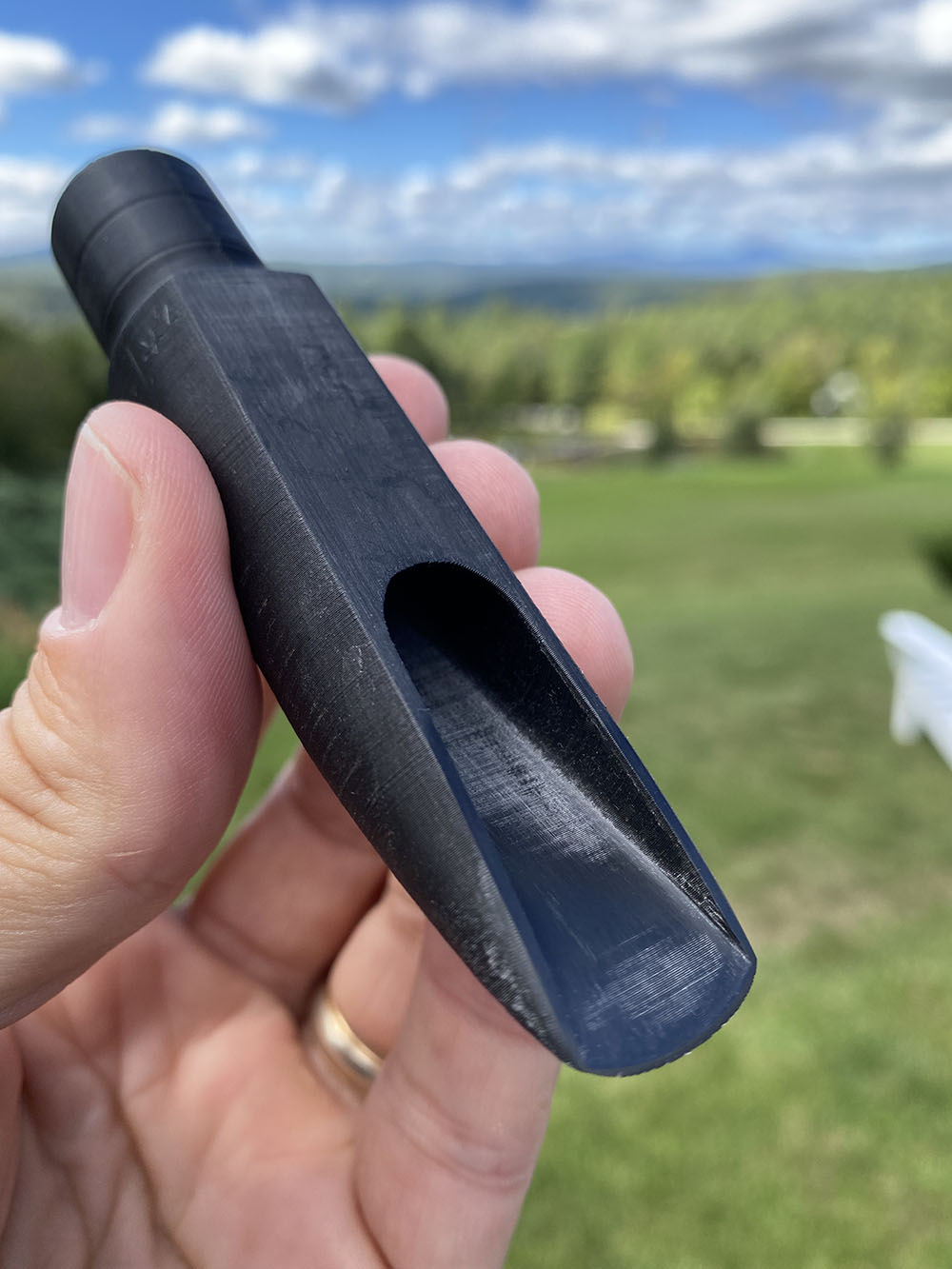



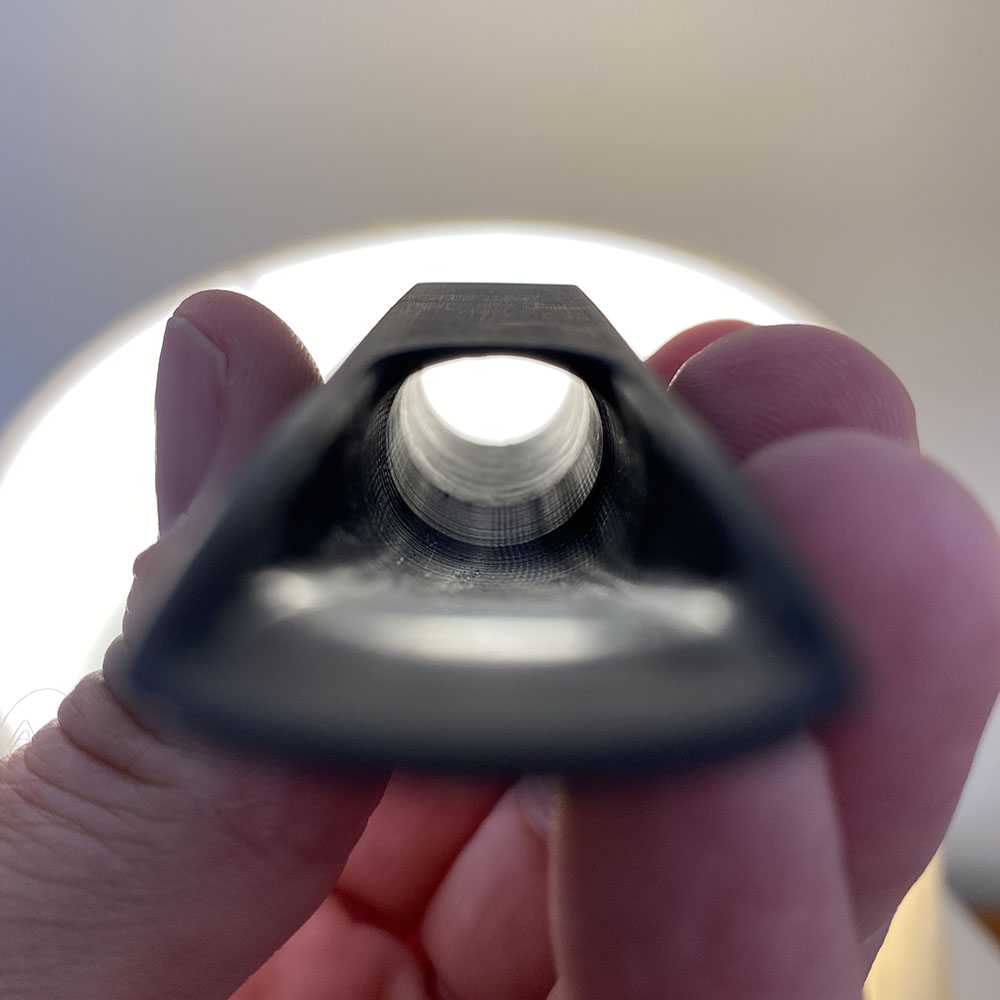
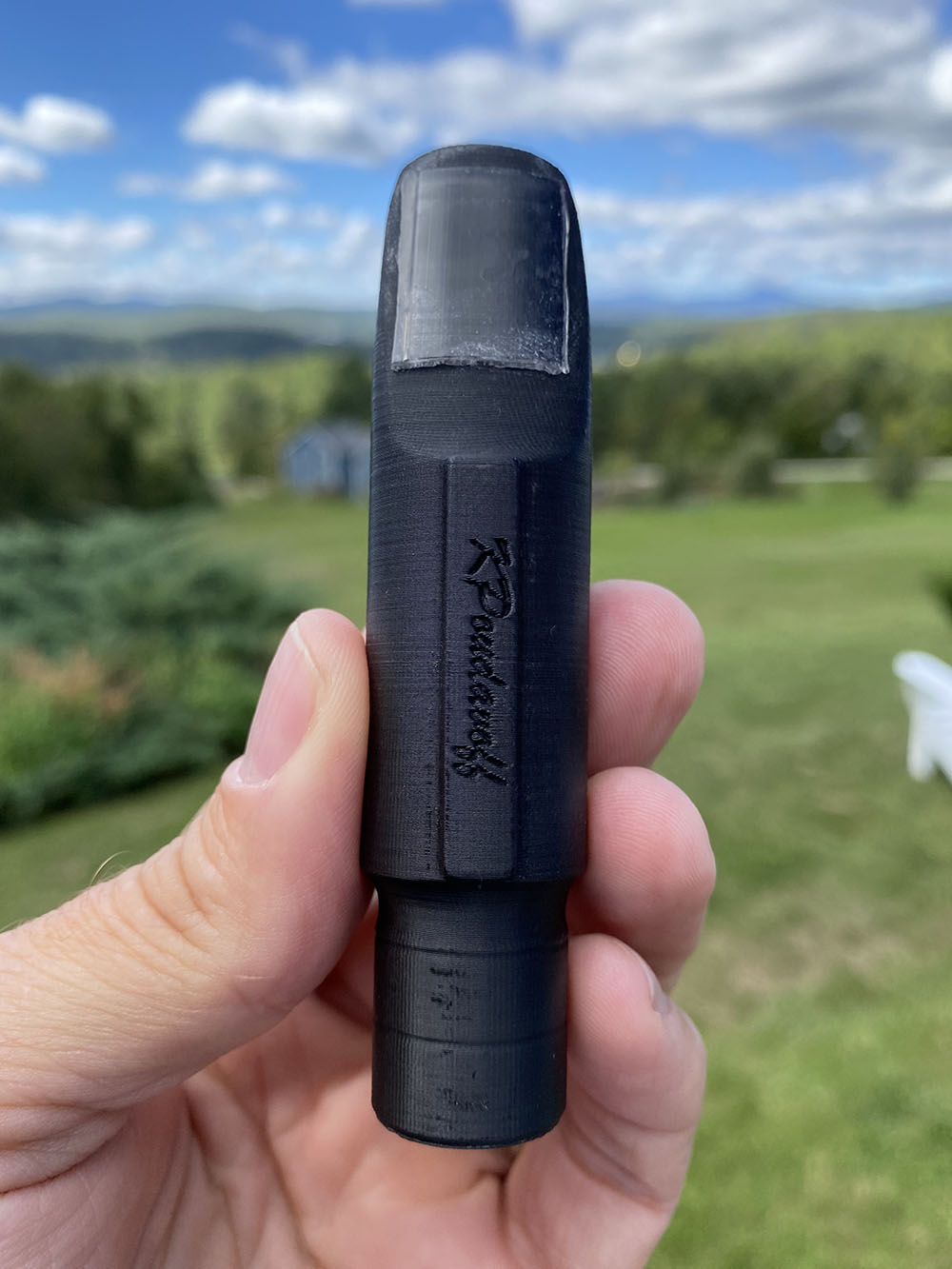
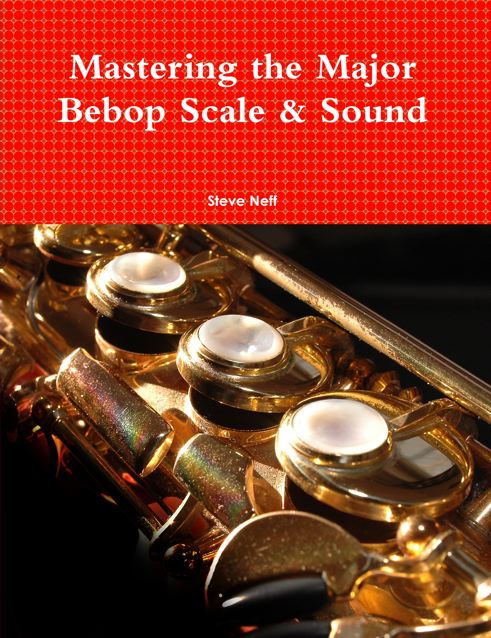


On “More than you know” Kirill sounds really good a la Dexter Gordon with the excellent copy of Ottolink; I’m curious to hear how he plays with the KPoudavoff Zimberoff Hollywood 6 * (Dexter ‘s Curve)-copy of a Dukoff.
Giuseppe.
Both the Double ring model and the Florida sound great; for that matter, I prefer Florida.
But I look forward to hearing the Dukoff copies.
Thanks Steve for your helpful work.
PS. I read a reported statement from Dex that his Dukoff (I think the lost or stolen one along with his Conn) was about a 5*).
Giuseppe.
I report, with copy and paste, if legal, what is taken from the site:
https://www.saxontheweb.net/threads/rs-berkeley-legends-%E2%80%9Cdexter-gordon%E2%80%9D-thoughts.365884/page-2
extrapolating, if legal, a comment from user Nicolas Trefeil who in response to user mrpeebee reports a statement made to him by Dexter Gordon, as Trefeil writes:
“… Nicolas Trefeil
Registered
Joined Aug 22, 2013
9 Posts
# 34 Oct 3, 2020
mrpeebee said:
Yes, it’s hard to find consistent and reliable data about mouthpieces used by great players. If I remember well I did read about Dexter’s 8* Link in ‘Dexter Gordon – A Musical Biography’ by Stan Britt, but I could also have grabbed it from the liner notes on one of the many LP’s I have from Dexter.
Here are some links:
– Dexter’s biography: https://www.goodreads.com/book/show/1282114.Dexter_Gordon
– Nicolas Trefeil setup of tenor players: https://www.nicolastrefeil.com/tenor-sax-player-s-setup
– Old SOTW thread from 2011: https://forum.saxontheweb.net/showt…tups-Help-needed-from-SOTW-members-quot-quot/
Nicolas Trefeil (see above for the link) states that Dexter used a Dukoff BD Hollywood metal 5* slightly refaced with La Voz Medium reeds.
I’m not sure how reliable that is, because he is also not accurate about the mouthpiece Dexter used in the mid 40’s. That was an Otto Link Tone Master 6 (not a Four ****) which Dexter traded with Illinois Jacquet (who got Dexter’s refaced TM 4) when both played with Lionel Hampton in the early 40’s. That’s what IJ has stated on several places (also in the above mentioned biography of Dexter).
Hello MrPeebee. I try to give good information on my web site, I can make some mistake, but the information from my Web site about Dexter Gordon mouthpieces is given by Dexter Gordon himself
“Actually this present mouthpiece of mine is relatively small. It’s just medium size a five-star. It’s been straightened out a little bit, but it’s not a big mouthpiece. It’s blows very free and gets a nice substantial sound. Most people are surprises because they think it’s much a much larger mouthpiece than it is. They think it’s maybe an eight or nine or something like that, but it’s not. So that’s why i say it’s projection that counts.”
-from an interview in Crescendo Magazine of December 1962. (The picture of the article is showing him with is Conn and Dukoff mouthpiece). He also says about the reed: La Voz, medium strength
Dexter Gordon also says in this interview that before the mouthpiece is playing now, he played an Otto Link especially made for him during “The chase” era (1947) and until it got stolen around 1952.
All the best.
Nicolas Trefeil “.
Giuseppe.
PS “… It’s just medium size a five-star. It’s been straightened out a little bit, but it’s not a big mouthpiece…”.
My friend Antoine Roney, who met and talked to Dexter, says “he told me it was a 7”. Considering that Dex mentioned an 8 size in one of his interviews makes us realize that he’s played several Florida Links, and I noticed that too, just by looking at some of the album covers.
Regarding the Dukoff, the facing was replicated from Dexter’s mouthpiece. It was a 6* size, exactly as he said “straightened out a bit”.
In fact, if lawful, I quote what Theo Wanne hypothesizes on his website:
https://theowanne.com/knowledge/mouthpiece-museum/dukoff-mouthpieces/
“… Dexter Gordon played on a Conn 10m and a Dukoff BD Hollywood tenor saxophone mouthpiece during the Blue Note era until the mid-sixties. There has always been a huge debate about which model BD Dukoff Dexter played, the 1945 medium chamber or this 1949 large chamber model.
I know there was a 1949 Dukoff BD Hollywood tenor mouthpiece stamped “DG Special” on the side with a 6* tip opening. This might have been a ‘Dexter Gordon’ Special model, so I suspect he played on this model…”.
Giuseppe.
Thanks Mr. KPoudavoff for your kind reply.
In fact I thought that “straightened out a bit” might explain the 6*, and I thought that Dex had had many mouthpieces in his (unfortunately not enough) long career.
Congratulations for your great work, for the way your mouthpieces sound…
Best regards,
Giuseppe.
I reflect to myself and ask myself:
The Dukoff we are talking about, not to be confused with the Otto Link stolen from Dexter in 1952, is the one Dex used when playing Lady Bird in Belgium in 1964, which can be seen in the link which, if lawful, I am attaching?
https://www.youtube.com/watch?v=r0vhqDCy9eQ
Later the Conn of the video was, if I’m not mistaken, from what I read, either lost or stolen in an airport in Europe and later Dex is seen playing a Mark VI and an Otto Link.
Therefore, I wonder, together with the Conn, was not the Dukoff of the video also stolen?
I thought so because, later, Dex is seen playing, together with the Mark VI, with an Otto Link… Perhaps he preferred this set up to the one with the Dukoff? and this Dukoff, I ask to myself, was not never lost or stolen, or was later returned, if is that replicated?
Giuseppe.
I have again listened to Mr. Poudavoff playing his KP Florida on More than you know ballad and, every time I hear it, I like it more!
What a beautiful tone he has, and how, too, his KPoudavoff Florida sounds well!
How many nuances of sound can be had from this mouthpiece!
Giuseppe.
Steve thanks again for a great review. Everything you said about a good Florida link tenor sax mouthpiece is true for me. I feel I can shape the sound with an Otto Link and even using different reeds I can get a brighter tone with a Rigotti Gold or warmer fatter tone with an Ishimori.
My go to tenor mouthpiece for years has been a 7* Florida Otto Link with a nice rollover baffle. I read a SOTW thread years ago from Phil Barone on how Links can assist you with getting your unique sound. I found this to be true by just living with the Florida Link mouthpiece. It never gets in the way or dictates the sound like some high baffle pieces and I could create a tone to play funk or straight ahead jazz on command. A really versatile mouthpiece.
One of my favorite players that comes to mind is Bob Malach with his unique and amazing tone. I read a quote on SOTW from a Bob Malach Interview.
“I recently listened to an interview with studio cat Lawrence Feldman in which he quotes his friend Bob Malach as saying “Years ago, all the cats played the same mouthpiece (Otto Link) and they all sounded different. Now there are hundreds of different mouthpieces and everyone sounds the same.” Clearly a bit of an exaggeration, but I think it’s largely true.”
I also think it’s largely true and how a good Link tenor saxophone mouthpiece can be a pallet to create unique tones.
I know you played a plastic replica of the KPoudavoff of the Florida Otto Link. Curious what a solid silver KPoudavoff Florida or Double Ring would sound like? Maybe brighter?
Thanks again for your honest reviews for the sax community!
Harry
It depends. I offer various configurations. USA, No USA middle era, No USA short shank era. They all do different things.
I think Harry was asking if there is any difference in sound between the plastic mouthpieces and the solid silver mouthpieces if they had the same exact design?
Hello Mr Poudavoff,
just for my historical knowledge, I ask you if you could kindly give me information about the Ottolink 1940 Tone Master that Coltrane used in a certain period, maybe ’50/’60 year’s. I enclose, if lawful, taken from Theo Wanne’s website, information on the matter that you will certainly already know. From
https://theowanne.com/knowledge/mouthpiece-museum/otto-link-mouthpieces/ :
“… 1940 TONE MASTER MOUTHPIECE
Otto Link started putting a ridge on top of their metal mouthpieces to make it easier to center the ligature. These mouthpieces were made in New York and had a bit more projection then the older models. They had very long and deep facings (like the older models), playing better with small tip openings. They did, on rare occasions, make larger tip openings, such as a 7 or 8. However, these mouthpieces still retained the very long and deep facing, which curtailed their responsiveness. The TONE MASTER models had silver under gold plating. The serial numbers were on the side and the tip openings were stamped on the table. The ligatures truly improved at this point. The reed contact plates were much thinner, allowing the reed to vibrate more freely. The top of the thumb screw now read, OTTO LINK… OMISSIS …
The first models had four smaller digits for a serial number.The later models had three larger digits… OMISSIS…
Some of the musicians that used the Otto Link TONE MASTER included:
John Coltrane (He put a wedge inside his Tone Master so that it would get signature bright sound. His mouthpiece was a size 6.)…”.
—————————————
In a sharp photo on a record cover I clearly saw Tone Master written on an apparently narrow tip opening mouthpiece; from the face of Coltrane, relatively young, it must have been an era before the “Impulse”, perhaps it was “Prestige”, circa 1956, an era of which I really like the sound of Coltrane.
Thanks for any information on this.
Giuseppe.
Coltrane played mainly an “improved” late period Tonemaster from the late 40s to ~1963. His tip opening was likely a 5*, and despite popular belief, Coltrane did not use a custom baffle in his mpc. He definitely could have experimented with it at some point (as using gum, dental wax, or epoxy was something of an industry trick that everyone likely new at the time), but you can hear the largeness of the chamber in his sound, and those mouthpieces also play nice and bright like how his sound was if you learn how to direct air through the mouthpiece.
Coltrane also switched reed strengths from 5 or 4 1/2 to a 4 in 1957 and switched reed types from Ricos to Chiron Vibrator reeds some time in mid 1958.
Coltrane did have his mouthpiece refaced numerous times though (as well as working on it himself), and he used a progressively shorter facing on it as time went on (this was especially true after he started playing soprano and got dissatisfied with his tenor mouthpiece). Eventually, he “ruined” the mouthpiece after working on it a little too much. The most likely cause of this was making the facing shorter than he wanted. He still played this mouthpiece all the way up until 1965, but started playing Double Rings, a transitional “quad ring,” and Florida No USA pieces as the 60s progressed and was playing almost exclusively an STM from ‘65 to his death in ‘67.
(Some additional info: Coltrane also played a hard rubber Berg Larsen mouthpiece in the mid-late 50s such as on albums like Sonny’s Crib and Kenny Burrell with John Coltrane (also most likely on the album with Monk at Carnegie Hall, but that’s just speculation on my part whereas the other two are confirmed by session photos). Coltrane also occasionally played a HR Brilhart mouthpiece in the early 60s (seen in some session photos from the Johnny Hartman album) as well as a HR Selmer Soloist Short-Shank (seen in some concert pictures and on the cover of Coltrane Quartet Plays).
Hi Michael,
You are really kind to provide me with all this information and I thank you.
I already knew a few of them, others I didn’t, and others are precious because they confirm some of my assumptions, such as that of using a shorter facing.
I knew his statement that he had ruined his mouthpiece while working on it.
I had also imagined by ear, listening to the records, the period in which he moved to the other link, and then to the STM.
For my taste I prefer the sound he had until he used the Tone Master (and probably the SBA tenor).
I have the record where he plays with Kenny Burrell and the one with Johnny Hartman and, on Youtube, I had found a tune where he played with the Soloist.
From some photos I was also aware of the Brilhart and the Soloist in HR.
The funny thing is, currently, many consider a 5* tip opening mouthpiece for amateur use only!
Thanks again for the valuable information you sent me.
Giuseppe.
If legal, I post from Youtube and I thank Michael:
https://www.youtube.com/watch?v=qciRcd-CRa8
hard rubber Berg Larsen mouthpiece in the mid-late 50s such as on albums like Sonny’s Crib
https://www.youtube.com/watch?v=3R6RrmlbB38
hard rubber Berg Larsen mouthpiece in the mid-late 50s such as on albums like John Coltrane and Kenny Burrell
https://www.youtube.com/watch?v=ecrE80rnjhw
occasionally played a HR Brilhart mouthpiece in the early 60s (seen in some session photos from the Johnny Hartman album)
https://www.youtube.com/watch?v=qtSor9kUXOA From 6:59
HR Selmer Soloist Short-Shank (seen in some concert pictures and on the cover of Coltrane Quartet Plays).
Change the mouthpiece, but it is always Trane’s sound!
Giuseppe.
Michael,
Thanks for coming by and adding your detailed knowledge about Coltrane to the discussion. It was very cool to read your post. Steve